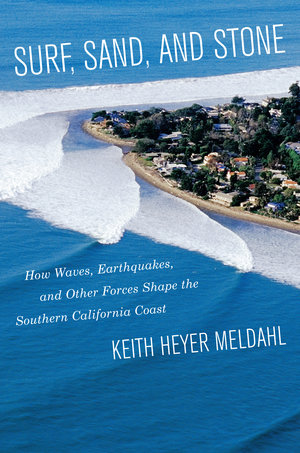Established in 2005 International Surfing Day is a worldwide celebration of the sport and surf culture, and is also used as an opportunity for the surfing community to give back to the environment by organizing educational events, beach clean-ups, dune and habitat restoration, and other activist campaigns.
We are pleased to have relevant titles that cover the history, culture, environment, as well as address the issues around public access to beaches and the ocean.

Empire in Waves
A Political History of Surfing
by Scott Laderman
Surfing today evokes many things: thundering waves, warm beaches, bikinis and lifeguards, and carefree pleasure. But is the story of surfing really as simple as popular culture suggests? In this first international political history of the sport, Scott Laderman shows that while wave riding is indeed capable of stimulating tremendous pleasure, its globalization went hand in hand with the blood and repression of the long twentieth century.
Emerging as an imperial instrument in post-annexation Hawaii, spawning a form of tourism that conquered the littoral Third World, tracing the struggle against South African apartheid, and employed as a diplomatic weapon in America’s Cold War arsenal, the saga of modern surfing is only partially captured by Gidget, the Beach Boys, and the film Blue Crush. From nineteenth-century American empire-building in the Pacific to the low-wage labor of the surf industry today, Laderman argues that surfing in fact closely mirrored American foreign relations. Yet despite its less-than-golden past, the sport continues to captivate people worldwide.
Surf, Sand, and Stone
How Waves, Earthquakes, and Other Forces Shape the Southern California Coast
by Keith Heyer Meldahl
Surf, Sand, and Stone tells the scientific story of the Southern California coast: its mountains, islands, beaches, bluffs, surfing waves, earthquakes, and related phenomena. It takes readers from San Diego to Santa Barbara, revealing the evidence for how the coast’s features came to be and how they are continually changing. With a compelling narrative and clear illustrations, Surf, Sand, and Stone outlines how the coast will be altered in the future and how we can best prepare for it.
Surfing about Music
by Timothy J. Cooley
This first major examination the interrelationships of music and surfing explores different ways that surfers combine surfing with making and listening to music. Tim Cooley uses his knowledge and experience as a practicing musician and avid surfer to consider the musical practices of surfers in locations around the world, taking into account ideas about surfing as a global affinity group and the real-life stories of surfers and musicians he encounters. In doing so, he expands ethnomusicological thinking about the many ways musical practices are integral to human socializing, creativity, and the condition of being human.
Cooley discusses the origins of surfing in Hawai‘i, its central role in Hawaiian society, and the mele (chants) and hula (dance or visual poetry) about surfing. He covers instrumental rock from groups like Dick Dale and the Del Tones and many others, and songs about surfing performed by the Beach Boys. As he traces trends globally, three broad styles emerge: surf music, punk rock, and acoustic singer-songwriter music. Cooley also examines surfing contests and music festivals as well as the music used in a selection surf movies that were particularly influential in shaping the musical practices of significant groups of surfers. Engaging, informative, and enlightening, this book is a fascinating exploration of surfing as a cultural practice with accompanying rituals, habits, and conceptions about who surfs and why, and of how musical ideas and practices are key to the many things that surfing is and aspires to be.

California Coastal Access Guide, Seventh Edition
From the majestic redwoods and rocky shores in the north to the palm trees and wide, sandy beaches in the south, the California coast is an area of unsurpassed beauty and diversity. This thoroughly revised and expanded 7th edition of the California Coastal Access Guide is an essential travel handbook for both new and seasoned visitors exploring California’s majestic 1,271-mile shoreline. With up-to-date maps and information, it is an invaluable travel guide for all coastal visitors—beachgoers, hikers, campers, swimmers, divers, surfers, anglers, and boaters—detailing where to go, how to get there, and what facilities and environment to expect.

